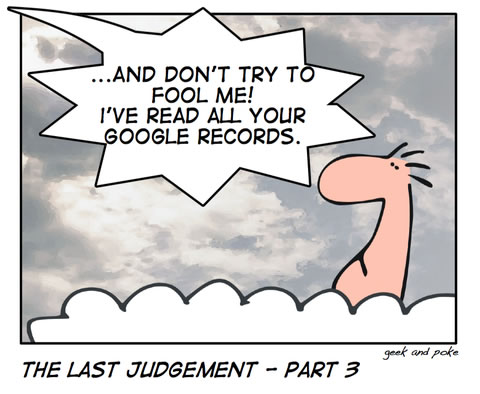What is Freemium?

Freemium, a combination of the words "free" and "premium," is a business model where the company gives away a free service or software to all customers. This service/software is usually a basic, scaled down version of what the company offers as a premium paid service. The company builds a loyal unpaid customer base and is able to continually offer additional service through advertising, referral or word of mouth to induce the customer to move up to the paid level. The products offered are usually easy to either download or use online. Freemium has become a popular model for Web 2.0 companies to market their products. In fact, the concept of a smaller giveaway to attract a premium customer is not new.
For the purposes of our discussion here, we will consider the newer models related to Web 2.0 as freemium.
Types of Freemium (from Chris Anderson)
Time Limited - example 30 days free then user must pay
Seat Limited - example -5 seats free to get more pay (Elluminate v-room allows 3 users)
Feature Limited - set number of features with basic- to get better cooler features move to premium
Storage/Capacity Limited - example g-mail more storage move to premium
History of the Word "Freemium"
The concept of freemium was explained by Fred Wilson in 1996 (Wilson, AVC Blogs). In his blog posting he asked readers to name the model and within hours Jared Lukin came up with the word freemium. The term has become widely used and the concept has become the subject of many debates especially related to the future of the model. Wired's, Editor-in Chief,Chris Anderson examines the many sides of free and freemium in his 2009 book Free: The Future of a Radical Price. In a May 25, 2009 New York Times article " Ad Revenue on the Web No Sure Bet", author Claire Cain Miller talks about the movement of many web companies away from ad-only models towards what she calls the most popular among Web start-up--freemium based models. Many online games have also adopted a freemium model. Not lost on the owners of the game is the idea of having large numbers of users create accounts and experience their games. Beau Hindman from massively.com writes, "Why is this business model a good one to go with as a developer? In my opinion, it allows players plenty of time to get hooked into the product. We all know someone who, within hours of downloading a certain pay-to-play trial, rushes to the website to subscribe. Now imagine if you were able to build up a character, establish relationships in-game, and explore a good portion of the world right away. How fast would you sign up to experience more?"
What are the advantages and disadvantages of Freemium for educators?
Advantages
The biggest advantage of freemium software is that if the user sticks with the unpaid version, the software is no cost. Some freemium is offered right on the internet and requires no download which makes it available anytime-anywhere. Usually the programs are simple and easy to learn for both teachers and students. Another advantage of freemium is that if users are unfamiliar with technology or afraid of technology, these simple programs can have the ability to show inexperienced users a simple way to buy in to technology. Because of the nature of Web 2.0, many companies are starting up using freemium models. What this creates is much competition to create the next big app resulting in a a wealth of applications in a wide variety of categories to choose from.
Disadvantages
 Of course the biggest disadvantage of feemium is that there is no guarantee that anything created will be there tomorrow. When a user signs up for a free service in a freemium model, at anytime that company can close its doors, stop offering the free service and if what users thought they owned online has not been downloaded to your their computers, their work can disappear forever.
Of course the biggest disadvantage of feemium is that there is no guarantee that anything created will be there tomorrow. When a user signs up for a free service in a freemium model, at anytime that company can close its doors, stop offering the free service and if what users thought they owned online has not been downloaded to your their computers, their work can disappear forever.
What does a user own online in a freemium model and how safe is it? Yahoo owned Flickr's user agreement states, "You agree that Yahoo! has no responsibility or liability for the deletion or failure to store any messages and other communications or other Content maintained or transmitted by the Service." and "Yahoo! reserves the right at any time to modify or discontinue, temporarily or permanently, the Service (or any part thereof) with or without notice. You agree that Yahoo! will not be liable to you or to any third party for any modification, suspension or discontinuance of the Service. " While Yahoo admits that the user still owns the content, they still make it clear that they can use the materials in anyway they want online. It's likely that if any of users actually read any of the user agreements before they click agree, they might not agree at all.
In the case of a site like Facebook, the biggest danger is that information that is deemed secure in an online environment may accidentally become available to others through error or hacking. Depending upon the particular product, some of the freemium models only allow use up to a certain point. If for example users want to use what they have created on another site, that may not be possible. Some software in this category only allows a short production. For example, if a user wanted to create a 5 minute video, perhaps it would only allow 3 minutes or the company logo may be prominently displayed throughout the video. Some freemium models also have advertising or other people's inappropriate creations on their pages which may be unacceptable for younger students.
Unless the application allows the user to download a finished product and post it where they choose, then freemium may not be as advantageous. As well as the problem of the entire site disappearing without notice, there is also the possibility that some of the features, the user comes to like and depend upon may at anytime disappear.
What is the Real Cost of Freemium?
Unlike open source that offers users a product with no strings attached, freemium comes with strings. The motive for offering a free service is to attract and encourage users to join the premium paid plan. Companies that offer freemium service do so because money is their ultimate goal. Usually start up costs and establishing systems costs a significant amount of money. Once users start to buy into premium accounts, there is no guarantee that the company will be able to make enough money to survive. The cost to users can be the loss of all their data and creative works at any time. At some point users may want more than the basic and may be lead to pay for premium. The user also pays with their loss of control over their data. Please see the page Evaluation Criteria and Template for Free Software to learn more about key points to consider when adopting any type of free software.
How can Freemium be used in education?
Freemium can be used in education in many ways. There are numerous types of freemium available to facilitate and enhance learning. Because of the success of these applications, there is more and more competition which leads to more and more choice. Social networking sites can encourage group collaboration and involvement. Sites like Google apps allow students to work collaboratively in a space that is available anytime-anywhere. The dog can't eat the Google page. Many applications allow the teacher and student to illustrate subjects in engaging and creative ways. The use of some freemium sites allows students and teachers to host materials. When work is hosted outside of institutions users are responsible for their own work.
Check these Examples of Freemium
